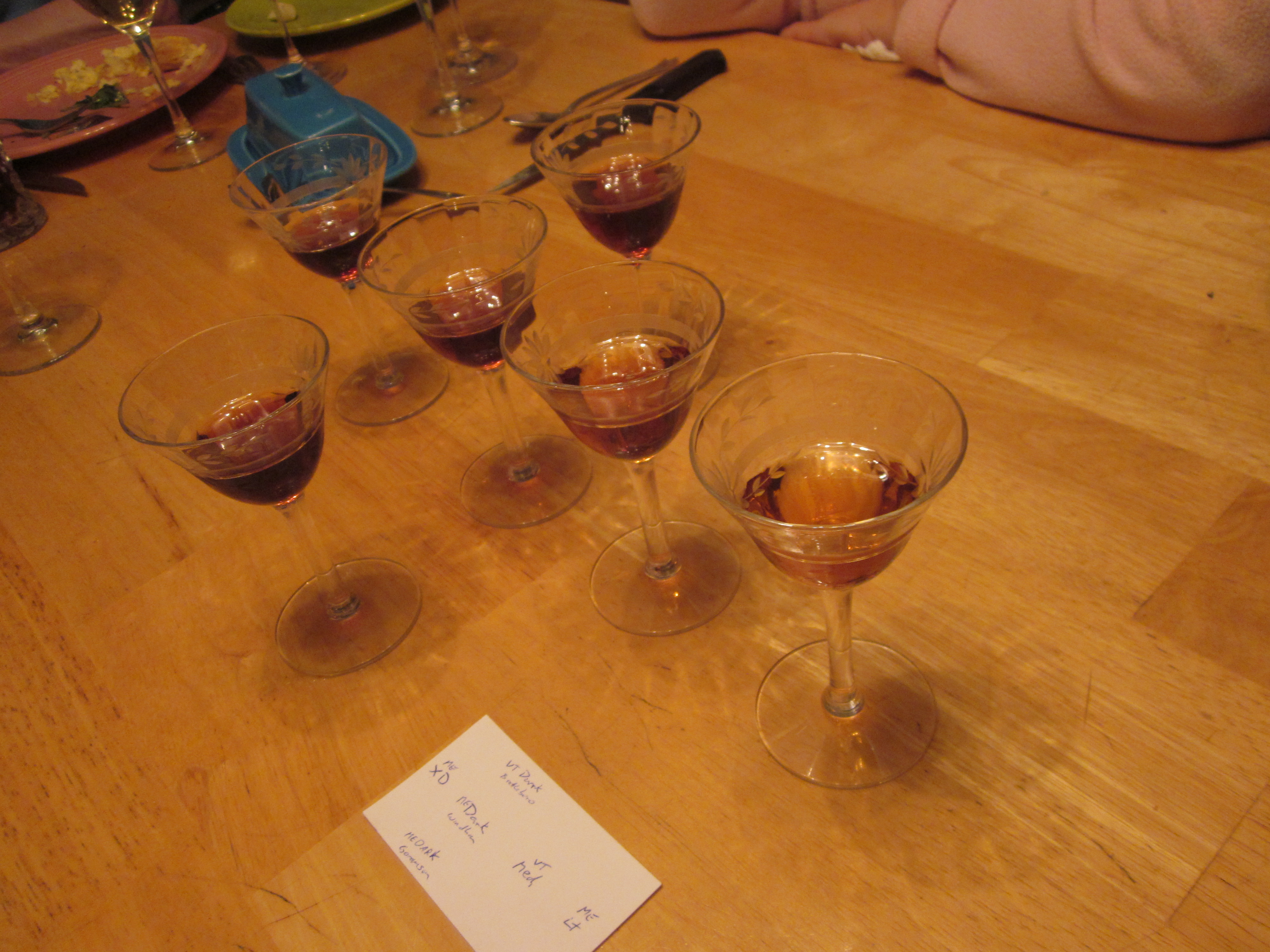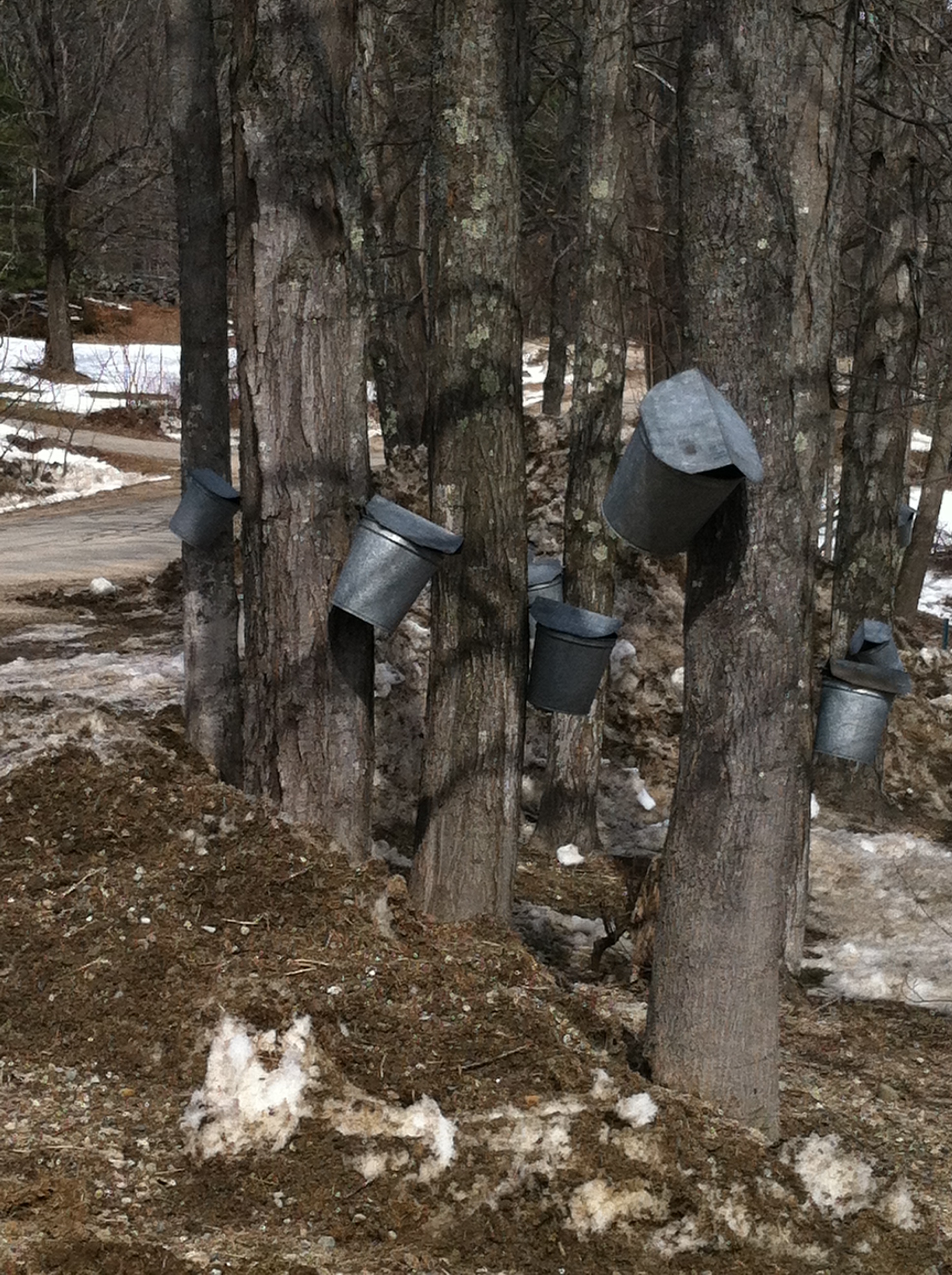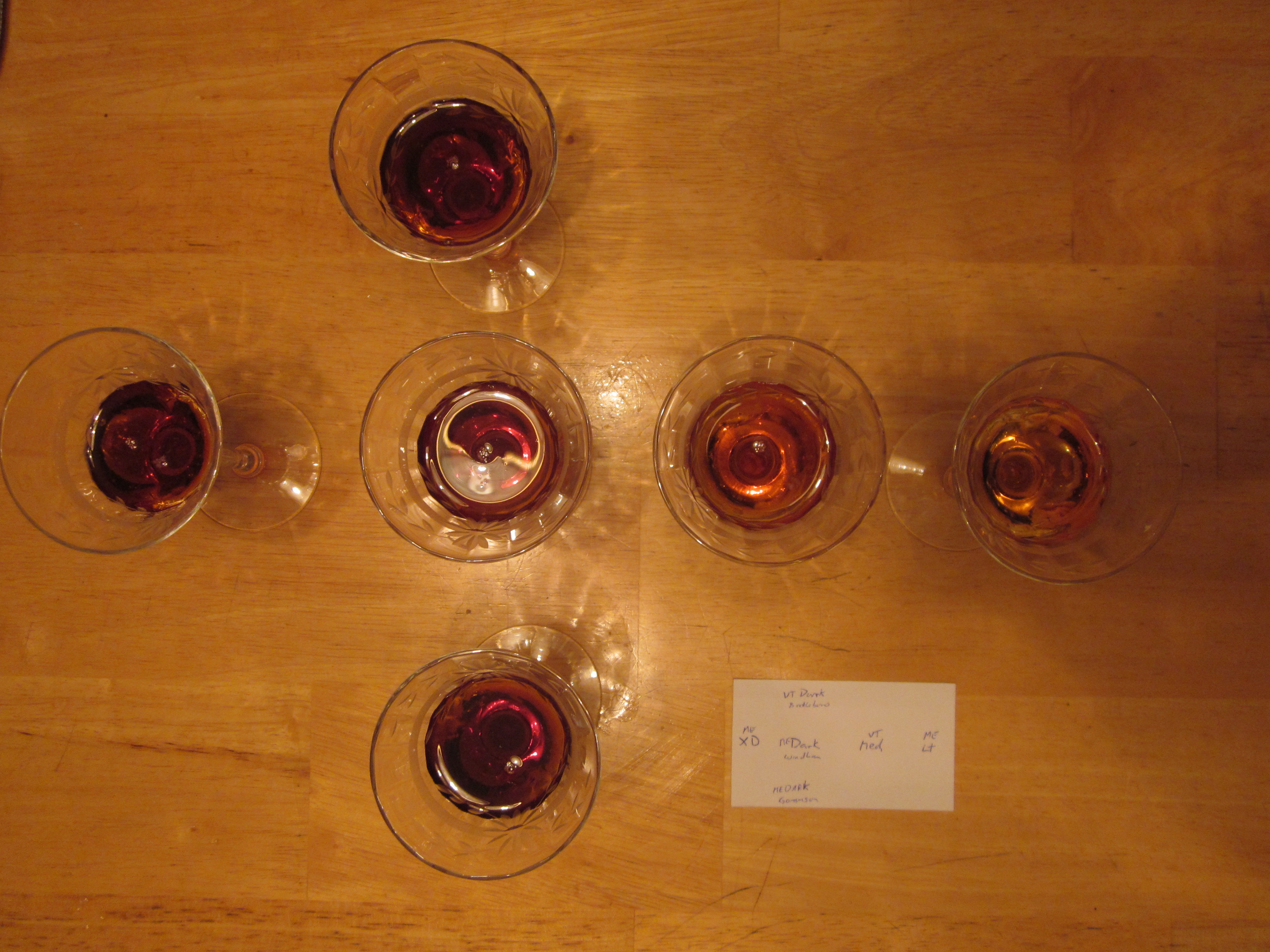
There's a good overview of maple syrup in cooking at the maple syrup page, with links to recipes.

This event was strictly about the flavors of the syrups, both different grades and any evidence of terroir or of other geographical effects between Maine and Vermont. We set up the array shown in the first photo above. The samples were:
VT Dark Amber
(Paradise Farm Sugarhouse, W. Brattleboro, VT)
ME Extra-Dark
(Hilltop Boilers, Newfield, ME)
ME Dark Amber
(Cooper’s Royal Heritage Farm, Windham, ME)
VT Med. Amber
(Paradise Farm Sugarhouse, W. Brattleboro, VT)
ME Light Amber
(Hilltop Boilers, Newfield, ME)
ME Dark Amber (Goranson Farm, Dresden, ME)
We started by tasting from the lightest to the darkest, and then we sampled the three Dark Ambers for hints of terroir.

The darker syrups have boiled longer, so some of the longer-chain complex sugars that give subtlety to thelighter syrups are absent in the darker syrups.
We tried mightly to find a sense of terroir in these syrups. There is good information about what to expect in Exploring Maple Sugaring in Maine. Our three samples had these differences:
The VT Dark Amber was from sugar maples on steep hillsides in southern Vermont. Note that Vermont maple syrup of any grade always has a tiny bit higher sugar content then any other US or Canadian maple syrup. We tried to account for that.
The ME Dark Amber from Cooper's Royal Heritage Farm was from sugar maples on steep hillsides in south-central Maine near Sebago Lake.
The ME Dark Amber from Goranson Farm was from red maples in a river valley.
The effect of the source tree species
I expected the syrup from the red maples to have boiled longer because the sap would be less sweet to start than sap from sugar maples. We found no discernible difference that we could agree on. That is, any differences we noted could be explained by subjective expectations, there was nothing that we could agree marked a red maple sourced dark amber syrup from a sugar maple sourced syrup.
The effect of the soil and micro-climate
Then we were curious to see if maple syrup, like wine, showed subtle differences cause by where the trees grew. In this case, both samples came from sugar maples on rocky hillsides, but the Vermont syrup came from an area with longer, colder winters and more rugged, less sunny terrain. Again we found no objective difference after taking into account the higher sugar content of the Vermont syrup.
Why dark amber?
The dark amber is the grade most used in home cooking, so we were hoping to learn if one type or another made a difference for that purpose. We found none that would stand up against any other flavors.
Conclusions
The differences, such as they are, should make no difference for cooking. It may be that any differences are more likely to be discerned among the more subtle lighter grades, and perhaps when used in drinks. We will try that the next time.
Remember that the grades have different names and higher sugar content in Vermont from everywhere else, so it's trickier to compare those grades with the different names. To compare the lightest grades, compare Maine or other Grade A Light Amber with Vermont Fancy syrup.
There is room for more research, and I can't wait to do it!
